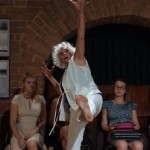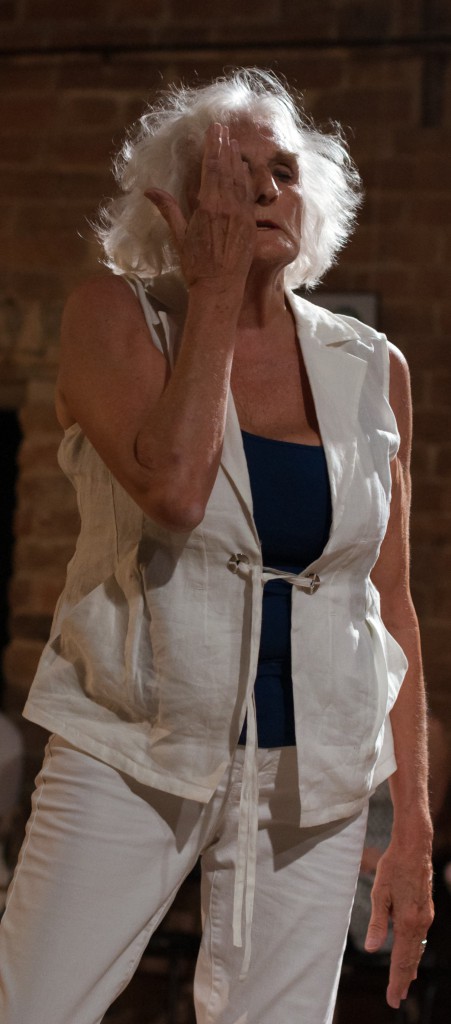ICEBERGS: Fault Line
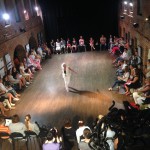 Small Format Contemporary Dance Festival
Small Format Contemporary Dance Festival
Curator: Ekaterina Zharinova
Yekaterinburg History Museum*
Yekaterinburg, Russia
(2016)
ICEBERGS: Fault Line*
August 26, 2016 @ 7:00 pm
Solo performance: Maida Withers
Panel Discussion: August 28, 2016 at noon
Maida Withers premieres ICEBERGS: Fault Line, a loosely structured solo based on MWDCCo site work, GLACIAL DRIFT.
Music: Electronic Composer / Musician Steven C. Hilmy Text: Poet / Sonospher Alex Caldiero and Poet David McAleavey.
*Maida is a noted “activist ” artist creating work to bring consciousness to environmental and earth issues since 1977.
ICEBERGS: Fault Line is a solo variation of GLACIAL DRIFT, an adaptation of an environment work that explores the boundaries between the wonder of nature and human impact on the environment with specific reference to the rapidly changing Arctic and Antarctica regions. GLACIAL DRIFT, an original site work choreographed by Maida Withers for ten dancers with Maida Withers Dance Construction Company, premiered in the monumental ICEBERGS exhibition designed by James Corners Field Operations architects for the Great Hall of the National Building Museum, July 20, 2016 in Washington, DC
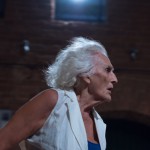

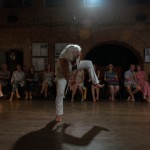
ICEBERGS: Fault Line photos by Alexey Patentny (Yekaterinburg, Russia)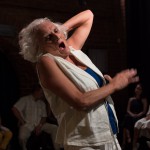

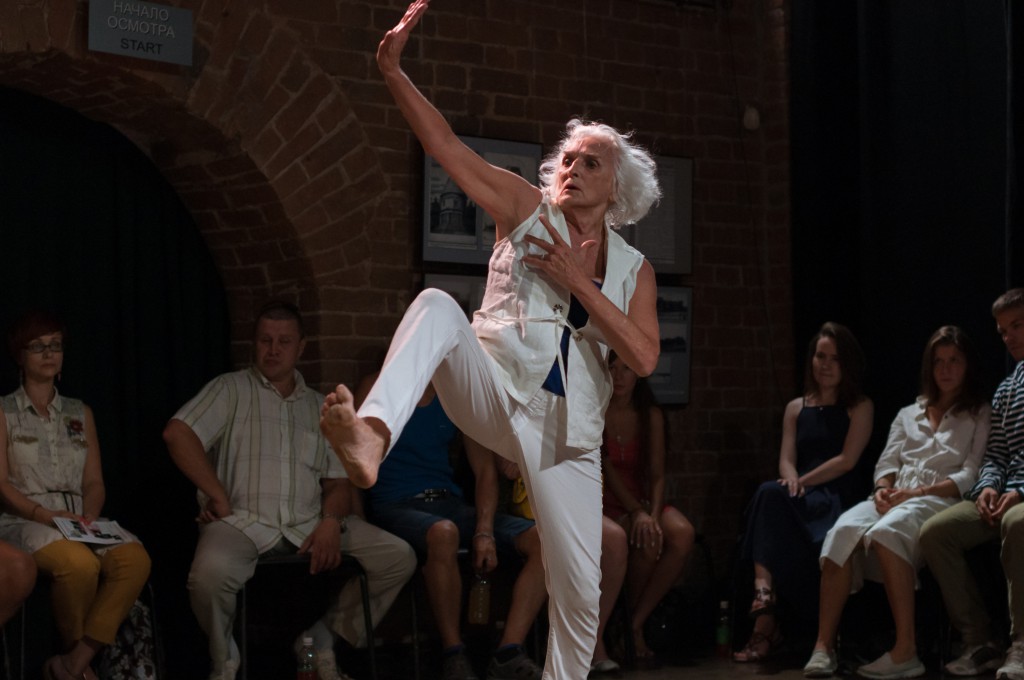
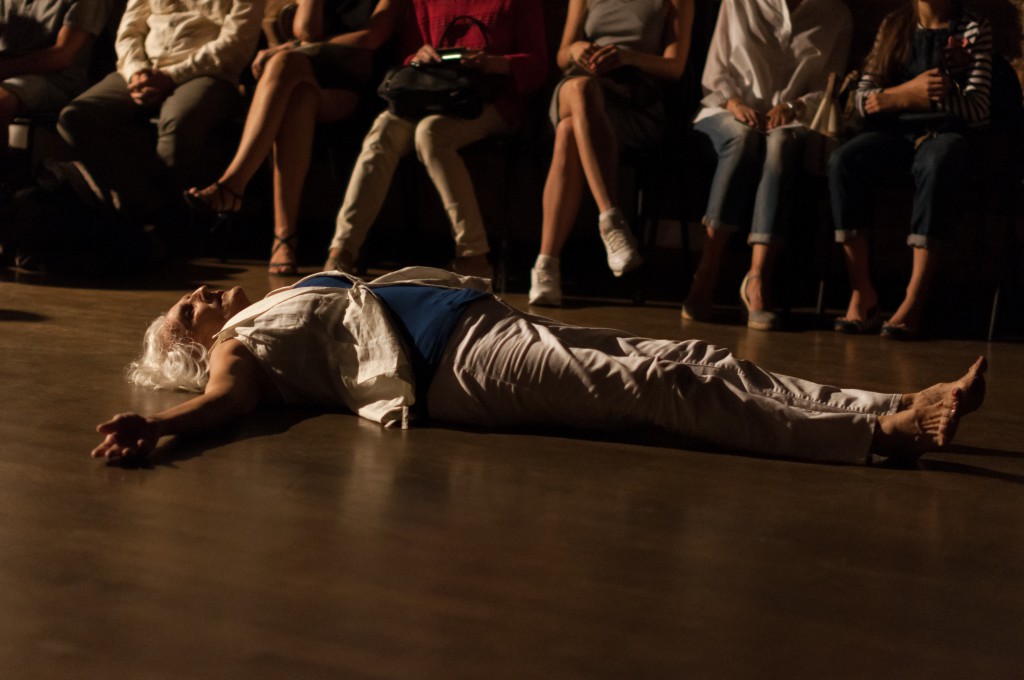
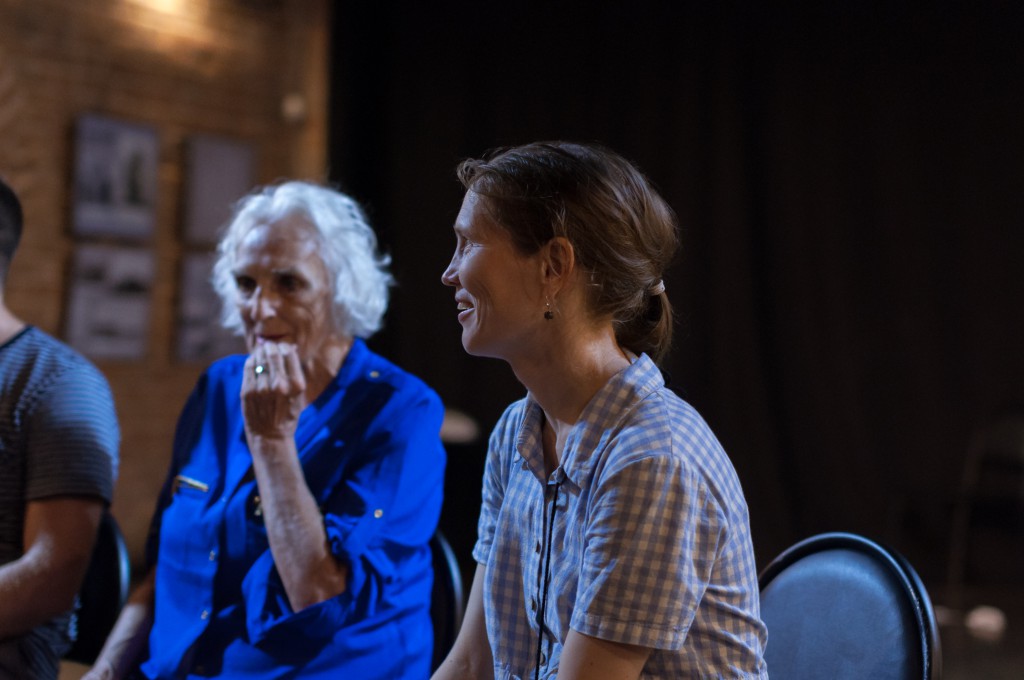
Maida Withers with Ekaterina Zharinova, curator, in talk back after the show.
ICEBERG: Fault Line photos by Natalia Burleva
*Photo by Antonina Vorobyova
INTERVIEW – August 2016 – Yekaterinburg, Russia
 Interview of Maida Withers by Ruslan Khisamutdinov, Russian journalist, regarding Maida’s view of dance in Russia past and present:
Interview of Maida Withers by Ruslan Khisamutdinov, Russian journalist, regarding Maida’s view of dance in Russia past and present:
Interview in Russian language: http://культура.екатеринбург.рф/articles/569/i193372/
Interview (below) in English:
Ruslan Khisamutdinov Question:
I read that you visited Russia for more than eleven times. How in general and specifically can you describe the contemporary dance situation in Russia?
Maida’s Comments:
(1)”Please view Under the Radar a dance documentary created in Russia: http://maidadance.com/works/under-the-radar-documentary-film/ This was a video by Maida Withers and American videographer Linda Lewett. Interviews were with Russian dance students, faculty, and city administrators, taken during our time at the Open Look Festival in St. Petersburg, Russia. This gives the Russian perspective.”
(2)Please view Tours and Projects in Russia to see the main activities of Maida Withers in Russia: http://maidadance.com/russian-tours-and-projects/. This information gives you a sense of my experiences in Russia.
“My first trip to Russia was in 1997. Post-modern dance was flourishing. There was an optimism about “new dance” that was almost palpable. I was so excited to be present during this revolutionary period. We had exceptional collaboration with contemporary dance organizations in St. Petersburg (Kannon Dance, Vadim Kasparov; Sasha Kukin, Sasha Kukin Dance Company; Nina Gasteva, Iguan Dance); Moscow (Sasha Papal eve, Kinetic Theatre and TsEKh; Elena Tupyseva, TsEKh); and Arts Residency (Konstantin Grouss), Tatiana Gordeeva (TsEKh education director and dancer in Moscow & St. Petersburg), Arkhangelsk (Touch Festival, Nikolai Shchetnev), and Krasnoyarsk (Isadora, Elena Slobodchikova). We brought Sasha to the US to mount a major repertory work. Relations between American and Russia were improving in the late 1990s so there was often support from the US Embassy and foundations such as the Trust for Mutual Understanding for projects in Russia. You will see my last full project in Russia was in 2007, the tour of Thresholds Crossed (Russian/American dancers) to three cities in Russia. Russian dancers were superb. I was thrilled to share such a political work with Russian audiences. I have submitted three major proposals to the U.S. Government and other foundations that in the past have supported projects in Russia. Funding for these projects has not been forthcoming. The projects were stellar projects involving Russian and American artists (dancers, musicians, etc.). I deeply regret these projects did not get funding to make them possible in Russia and in America. Two Russian dancers have been MFA students at George Washington University in the last three years. I am impressed by their creative work. However, I noticed that American Dance Festival received $20,000 to present Russian choreographer Tatiana Baganova’s company, Provincial Dances Theatre, as part of American Dance Festival’s 83rd season in Durham, North Carolina in July 2016 and at the Joyce Theater in New York in August 2016. I enjoy the work of Tatiana. The USA is not presenting the “newer” voices from Russia at this time.
There is an expected maturation and leveling out, expected, when any new movement or discovery of change occurs.
Ruslan Khisamutdinov Question:
You had some projects created in Russia. What inspired you when working on performances in Russia?
Maida’s Comments:
This is difficult for me to answer. There are so many astonishing experiences in Russia and so many amazing dancers and dance administrators. I think the most inspiration came from the dancers. The Russian dancers are disciplined and hard-working and excited about dance. In 2007 the American dancers were working long hours and sustaining momentum. That was also very true of the Russian dancers, perhaps even more disciplined.
I suppose if I had to choose one project, I would choose Thresholds Crossed (Russian/American artists) http://maidadance.com/works/thresholds-crossed/ which resulted from a culmination of many experiences in Russia. Activities on Solovky Island were so important for me to understand a difficult historical period in Russia. At the time I was on Solovky Island America was struggling with Guantanamo Bay prison (Abu Ghraib) in Cuba. I am a very political person and often politics is a subtext of my major works. Thresholds Crossed was a somewhat daring project to present to audiences in Russia. Ekaterina was selected to be a performer in Thresholds Crossed. You will see her dancing beautifully.
Ruslan Khisamutdinov Question:
This year Ekaterina Zharinova invited you to Yekaterinburg for Small-format contemporary dance festival. Have you ever been to Yekaterinburg before and what do you expect from the festival?
Maida’s Comments:
No I regret I have not been in Yekaterinburg. I am thrilled to become acquainted with another great Russian city and the audience and artists there. I am told there will be an audience of perhaps 40 people so I anticipate the situation will allow for intimacy between me and the audience. I anticipate that the technical aspects (lighting, scenery, etc.) will be simple for expediency and why would you need additional elements when dancing in such a beautiful place. My performance includes text that I will speak in English and someone will speak the poems in Russian. The poems are an important part of the performance for clarity of idea. Frankly, I expect to learn a lot from the performance. That is always true but especially true with international performances.
Dance in Museums is popular now in the USA and it appears to be the same in Russia. Museums are happy to have dance bring in new audiences.
I have performed in museums extensively since the 1970s. I am so excited to be in such a gorgeous and historic building in Russia. I only regret that I will not be there long enough to create a specific work for that space, that city, and the culture in Yekaterinburg and, preferably, include Russian dancers and performers in the project.
Years ago, I read about amazing site projects taking place in Yekaterinburg conceived and produced by the National Center for Contemporary Art. I wrote several times to Alisa Prudnikova regarding their brilliant ideas. I am looking forward to getting acquainted with people in Yekaterinburg. I have heard many fine stories.
In the United States at this time, there is a strong movement of artists seeking smaller venues and alternate venues for performance. The theatres are often outside the budget for dance artists so new resources are emerging. It is exciting to be in situations that allow a new relationship of the dancer to the audience. This past year I did a performance in a large private home that was originally a “house of prostitution” – rich in decorative aspects. There were 75, mostly, single people who meet once or twice a month to share culture but also specialty food and just to meet each other. There are two or three organizations like this in Washington, DC. I suppose it may be due to the isolation that may occur with the consumption of social media that is isolating and the number of people who choose not to marry but are looking for social engagement.
Ruslan Khisamutdinov Question:
4. You have been working a lot with foreign students. Is the dance language is international? How do the dance perception and understanding differ among your students from different countries?
Maida’s Comments:
Fortunately, George Washington University MFA Dance Program is for mid-career artists because it is a distance learning program and student/artists are only on campus during two summer periods. Our goal is for the mid-career artists who have been in the field for some time to clarify their artistic vision and work and to chart a path for the future. It is quite up to the student to take the lead in that. The difference in values and knowledge about dance as viewed from various cultures is a great strength in the program. We have had two Russian students and it has not been a problem with those two brilliant artists. The students develop very strong relationships through sharing opinion in open discussion classes. The diversity could be problem if the students do not all speak, write, and understand the English language. Generally, there is no problem with verbal communication, but sometimes the writing takes a little more investment of time from the faculty.
Ruslan Khisamutdinov Question
I heard a lot about your latest project in one of the museums of Washington. You prepared hard for it and as far as I know its opening was quite a success. Can you tell us what this project is about?
Maida’s Comments:
Please view the web page on the recent GLACIAL DRIFT music/dance/poetry project for the GREAT HALL in the Smithsonian’s National Building Museum: http://maidadance.com/works/glacial-drift/
ICEBERGS is an exhibition in one of Washington, DC’s most astonishing museums known for the architecture in the GREAT HALL The building occupies an entire block in the center of Washington, DC. ICEBERGS is probably the most exciting exhibition in Washington during the summer. The architectural firm, James Corner’s Field Operations is the designer (designer for the High Line in New York City and many other international projects. They had just 10 days to install the immense landscape of white recyclable pyramids/icebergs that are held in place by steel grid 5 stories above and steel wire. Maida Withers Dance Construction Company and musicians, John Driscoll, NYC, and Steve Hilmy, Florida, occupied the space from 6 pm until 10 pm dancing and engaging with the public in the exhibition with a twenty-minute performance at 7:00 pm that was repeated at 8:00 pm. The National Building Museum sold 1100 tickets for the event. GLACIAL DRIFT was very emotional. While the installation is “pure” visual installation, the dance and music were responsive to the human response to the destruction taking place. The dancers performed very intensely and the audience felt the commitment that was expressed. There were three men and three women in the main cast and 3 additional women who performed only at the conclusion in dresses made from hand sized water bottles….a fitting ending with ice becoming water—oceans filled with plastic remains.
I did not dance in GLACIAL DRIFT. I was the “voice” adding text to the music and the dance. In Yekaterinburg I will perform this dance for nine dancers and two musicians performing “live” as a solo for the first time.
Ruslan Khisamutdinov Question:
In your performances you pay much attention to synthesis of arts. You use video installations and many other things. What do you think can the dance lose its primacy due to such variety of technologies?
Maida’s Comments:
Multi-dimensional work is difficult to accomplish in my opinion. The multiple aspects (science, technology, visual art installations, live music, other) should not be involved unless it is absolutely important to communicate the ideas – basis of the work presented requires the multiplicity of art forms and interaction with other disciplines. In the case of GLACIAL DRIFT, of course, we were performing in a gigantic installation created by an internationally famous architectural firm from NYC. In that case we were able to bring a human message about the destructive impact of the human race on ICEBERGS, something the exhibition did not have time to address. We were collaborators, but somewhat after the fact. The installation was completed just 15 days prior to our premiere performance.
It is also helpful if collaborators continue to work together. I have worked with many collaborators over several years (poets, animators, virtual artists, scientists, musicians (always), architects, historians). For example the two musicians in GLACIAL DRIFT have worked with me for many years and toured with me all over the world. John Driscoll was the company musician/composer for the first 8 years of the Company (1974 to 1981). Steve Hilmy has been the composer/musician for the past 8 to 10 years. They have been performing with the company together for the past two years. Tania Fraga, brilliant 3-D virtual artist has done two very large projects with me (Dance of the Auroras-Fire in the Sky). Dancers in those works manipulated the projected visual 3-D images – first with the wireless mouse and in the last project with the brain waves from the Emotiv helmet worn by a dancer.
I, myself, prefer real-time interactive relationship with multiple arts where all the collaborators are present and active during the performance. Those projects could not have existed without collaboration. Most of my projects are like that.
For me, however, dance is the central art form and there is never a question about that. For me dance is the great integrator in the arts. It is always the heart of all that I do.
Ruslan Khisamutdinov Question:
Year after year interest in science popularization deepens all over the world. Dancers and choreographers in their performances address recent achievements in scientific knowledge. What scientific fields do you work on?
Maida’s Comments:
My most recent project, MindFluctuations, was involved with neuroscience (Emotiv helmet interface made possible by neuroscience research). http://maidadance.com/works/mindfluctuations;
Dance of the Auroras – Fire in the Sky was made possible by NASA and ESA scientists. Four satellites were placed in orbit at the same time I began the 4-years of research for the project. Astonishing satellite images from NASA/ESA of the behavior of the Sun were integrated into the virtual art that was manipulated by the dancers on stage using the wireless mouse in performance. http://maidadance.com/works/dance-of-the-auroras-fire-in-the-sky-stage-work/
Laser Dance was a collaboration with the worlds, at least USA, first laser artist using laser as art. http://maidadance.com/works/laser-dance/ Fifty mirrors above the audience and the stage created a laser grid that was manipulated and interrupted by the dancer using his/her body and the stilts used during the performance.
Ruslan Khisamutdinov Question:
The popular culture phenomenon of the last few years became a girl from the “Chandelier” song video clip by Australian singer Sia. The dancer who struck everybody was eleven-year old Maddie Ziegler. Choreography was produced by Ryan Heffington. What do you think, do such projects contribute to the fact that modern choreography is perceived more not as exclusive art which is understood only by the elite, but as the dance self-expression language understood by many a man?
Maida’s Comments:
When I read about the Sia project in the newspaper, my first thought was toward the protection of the eleven year old dancer. I know how destructive media can be for the most mature persons. There is some argument that popular media has made concert dance or dance as art more acceptable and people don’t feel they have to “look for a message.” Dance in the USA seems to be more accepted and has a broader following now than in 1960s. The audience, except for ballet, seems to continue to be smaller than, perhaps, music and visual art. In many ways, dance as an art form is more challenging than, perhaps, other art forms. It takes a great deal of group effort and interaction to create something unique. I think this challenge is why we are seeing so many new ways to try to make choreography that do not demand hours and hours of rehearsal and perfection of gestures, movements, and group execution of materials. It is very expensive as an art form and, perhaps, the least financially support (outside of the ballet). I am happy there are many influences at this time. Sometimes, however, it makes it difficult to have any interest or focus on aesthetics. In the USA, dance criticism is rare. There is writing (blogs) but nothing equaling the intellectual writing when aesthetics was an issue.
I know this is a little off your question, but I have great admiration and respect for audiences. They are smart and challenge us as artists. My curiosity about the interaction of artist/audience has motivated my extensive international tours. As a child I was raised in the open “red earth” lands in Utah and the Southwest. I struggled for years with the audiences in Washington, DC who were bringing the view of urban East Coast America to my concerts that were “freewheeling” and probably audacious in their view of freedom and even disrespect for convention. It is an interesting topic – what does each new generation bring to the arts both through artists and through audiences.
Ruslan Khisamutdinov Question:
In recent years I noticed a profound interest here in Russia in the creativity of John Cage. His music is often used by Russian dancers as background music for their performances. What do you think exactly generates interest among the current generation of dancers in creativity of one of the most unusual American composers of the XX century?
Maida’s Comments
John Cage was a guru for my generation (1960’s). Generally speaking, John Cage is probably the most known American musician/composer who does not play rock or other popular music. In the USA few would use his music, but most know about his ideas and philosophy of indeterminacy and chance. There are many who practice his ideas today who do not necessarily ascribe them to Cage…..the ideas are just enveloped into practice by artists today. I intersected with John Cage before I graduated from College and have been associated with those ideas through John Driscoll (composer for Maida Withers Dance Construction Company starting in 1974). Really, I think other ideas are “trumping” those ideas now but, art in the USA was certainly liberated by Cage. In dance the extensive interest in physical feats, in non-dance vocabulary and others seem more predominate today
Truslan Khisamutdinov Question:
Tell us about your literature preferences.
Maida’s Comments:
I like writing that engages philosophical and/or political thought. Very little is written in dance today about aesthetics, sadly, so we must find our language and ideas from other disciplines, perhaps, or from the writings of artists available on the Internet. I have great interest in global politics. I find the current global situation disturbing and follow developments closely.
I have been intensely engaged in the global environment movement since 1981. I follow all issue related to the destruction of the planet.
The books, The Body in Contemporary Art, and The Triumph of Anti-Art are current books I am reading for the course I teach, Trends in Performance Art. I am very interested in performance and performance art and have been since the 1970s. Some of my works are in the performance art genre.
Ruslan Khisamutdinov Question:
What movies inspire you? What are your favorite directors?
Maida’s Comments:
Generally speaking, I see as many independent films as possible and as many foreign films as possible. Independent films have become part of the mainstream media now.
Most interesting mainstream movie for me this year was Hateful Eight directed by Quentin Tarantino. I know I should not like it due to the violence, but it was so brilliantly directed and each shot ingeniously selected. I also liked Revenant with Leonardo de Caprio. The photography and nature were so spectacular beyond belief. It was too long, but the perspectives on nature were incredible.
My daughter is a Senior Vice President for Creative Content (publicity and promotions) for SONY Pictures in Los Angeles so I see all the films with which she is involved (Ghostbusters (female version), Spiderman, James Bond, Angry Birds (animation) are a few of the films). I enjoyed the nonsense of Ghostbusters and the mix of animation and filming – the absurd freedom taken in the film. It was so full of cultural references and so humorous even though it was a chaotic mess. The film industry seems to be somewhat in trouble with the varied media formats and instant access on iPhone, etc. It will be interesting to see what film is doing in 10 years
Ruslan Khisamutdinov Question:
If someone offers you to create a dance project the basis of which is one painting by any artist, one book by any writer or one movie by any director, what works of art would you choose?
Maida’s Comments:
Generally, I have created something new that never existed before rather than referencing already created work. However, I have deep respect for that process. It is a little hard for me to imagine having access to any collaborator(s) I could choose. I am quite careful in choosing since it is important for me to keep a sense of dance in the project.
At this time, I would choose content that would be best developed as a FILM with dance or performance work not a stage work. That would make it possible for me to work within the structure of the team used for film and have the support system required for creating film and, hopefully, the budget. Wouldn’t it be exciting to work with Alexander Nikolayevich Sokurov – one continuous camera shoot would be ideal.
Thank you for your responses!
Sincerely, Ruslan Khisamutdinov
What the press is saying
• “Icebergs: Fault Line” solo variation of the “Glacial Drift” group performance by Maida Withers
What I saw, for me was, first of all, about the strength of mind and transience of life. About the relativity of beauty and the importance of authenticity. It was about “who, if not you?”
Maida is a really strong personality and the image created by her once again reflected the situation in which modern people find themselves. We come to this world like masters, questioning everything around us, and leave it exhausted from tilting at windmills.
Maida used an amazing mantle and glasses in her variation. That truly mirrored the material nature and vanity of the world. She took them away at some point of the performance leaving them beyond the audience’s attention. And indeed, passion for such values tends to disappear once the “eternal”, universal meaning of life comes to light. There was a truly warm and vital moment when Maida said good-bye to the audience, leaving behind, intentionally or unintentionally, her stage props. And is it really so important when all the power is within you?..
Arina Babushok
http://uralady.ru/lifestyle/item/3716-ostorozhno-vozmozhno-vsjo
Arina Babushok (Uralady)
• The Festival continued and the Ekaterinburg History Museum started gradually transforming, while spectators sat down along the walls awaiting the following performance. Next thing you know there is this dazzling lady in a luxury fur coat and sunglasses breaking from the crowd of spectators right into the center of the hall. This is Maida Withers. Using the language of dance and performance she wants to speak to the audience about an unpopular matter- the impact of humans on environment and rapidly changing nature of the Arctic and Antarctic. Her performance Icebergs: Fault Line is a solo variation of a group choreography which was first presented in Washington a bit over a month ago. “You think you have nothing to do with it,”- says Maida during her performance, thus expressing the global trend – it is easier to believe that problems do not exist than to seek a solution together. Maida is an activist artist and it is therefore quite important for her to draw people’s attention to environmental issues with her art. I would like to specifically note the music by Steven C. Hilmy. It created a special atmosphere of immersion and cold in a good sense of the word. It was the cold of the ice giants and icebergs whose destiny is now in human hands.
Ruslan Khisamutdinov
http://globalcity.info/news/31/08/2016/5524
Ruslan Khisamutdinov (Globalcity)
An altogether poignant performance that viewers will forever carry with them. Adam Peiperl
Including Fault Lines
https://l.facebook.com/l.php?u=https%3A%2F%2Fsmallformatdance.wordpress.com%2F&h=AT27roAtD81f-JdT1YsdmY_y9tMBEU-ap2UpqlRVjeRqxkPDA0mrf8BiBf__CFTRQ32OWtX6_YlQ-aLxvaX8zIrHrFGByblsDosMl5u5bnqOWJCW98a9h2I2JZ73uz9q0pyyieuM6vkwifHg3wE"
History of Small Format Festival
Including Withers Fault Lines History of Small Format Festival
Artists and Collaborators
- Choreographer and Dancer
- Musician/Composer
-
- Poet / Sonospher
- Poet
- Reader
- Festival Curator
